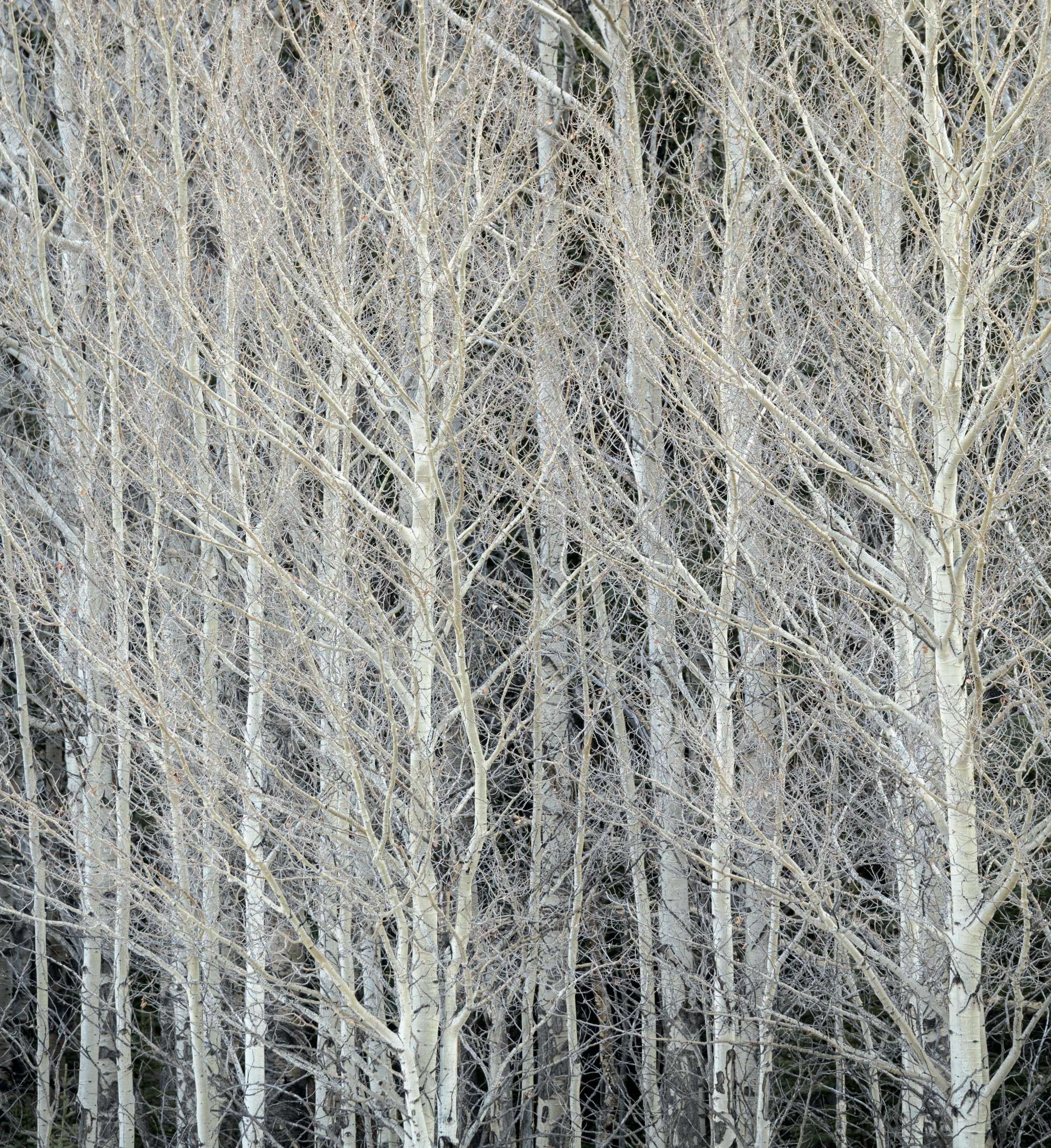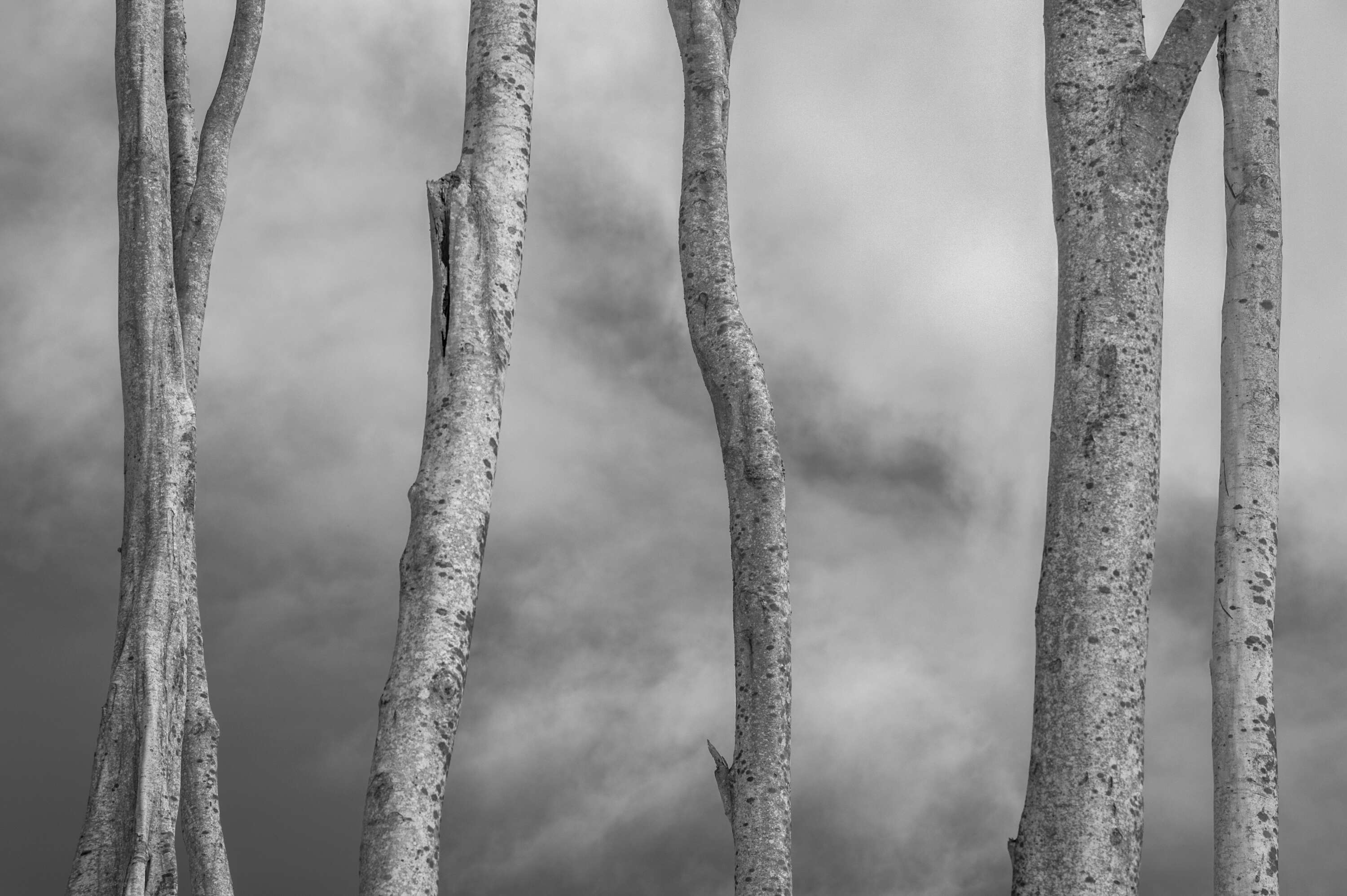Taming Woodlands
Techniques for Photographing Trees
Paul Gallagher
Also using the word ‘woodland’ can also influence the way in which we use our camera as we will be unconsciously telling ourselves that we are here to photograph a woodland. The obvious action then would be to fit a wide angle lens to our camera and fire away!
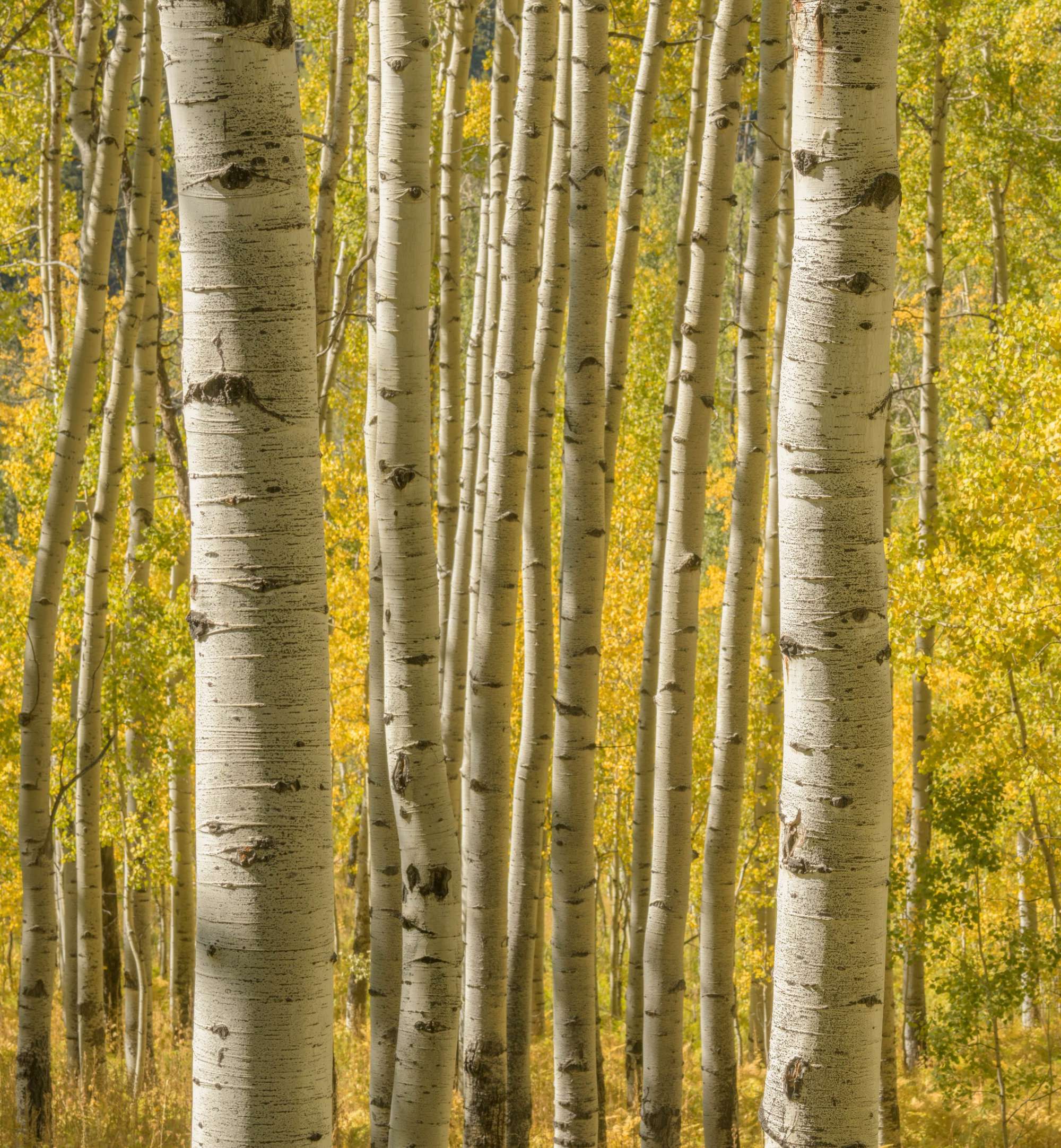
In my experience, this is often a great way of making images that will spectacularly let you down by being incredibly complex. Furthermore, when we humans are stood in a woodland, we use our three-dimensional vision to make sense of the place whilst constantly sending information to our brains which breaks down the scene. A camera is a monocular device and can never replicate what our eyes see so the resulting photograph in its splendid two-dimensional form will do little to represent the spectacular surroundings of a woodland of trees.
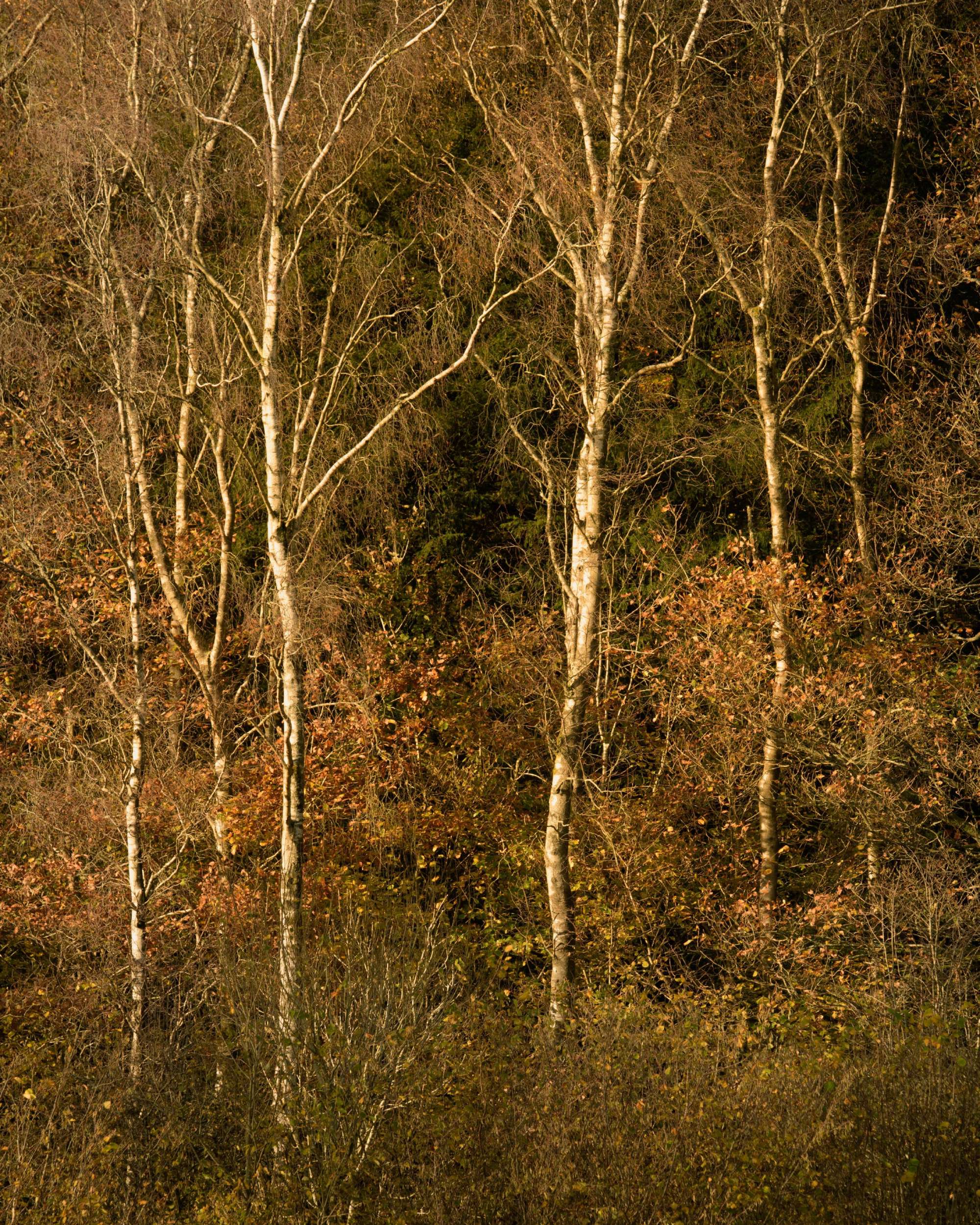
There are two main principles in which to photograph trees and woodland and they are to begin with a long lens, and secondly, look for shapes rather than the trees themselves. We actually do this with our eyes when we are there. Our human vision takes hundreds of ‘snapshots’ of the surrounding trees and our brain processes them into a less chaotic, cohesive vision of the place in which we are stood. The long lens will almost disallow you the opportunity to photograph the entire tree and force you ‘closer’ through magnification. Rather than being put off by this, try to embrace it and allow yourself to harness an intimate communion with the trees. Rather than treating it as a moment where you are ‘looking’ at trees up close and personal, try to relax with the complexity and begin to ‘see’ the relationships of the branches and limbs as they interact and live symbiotically.
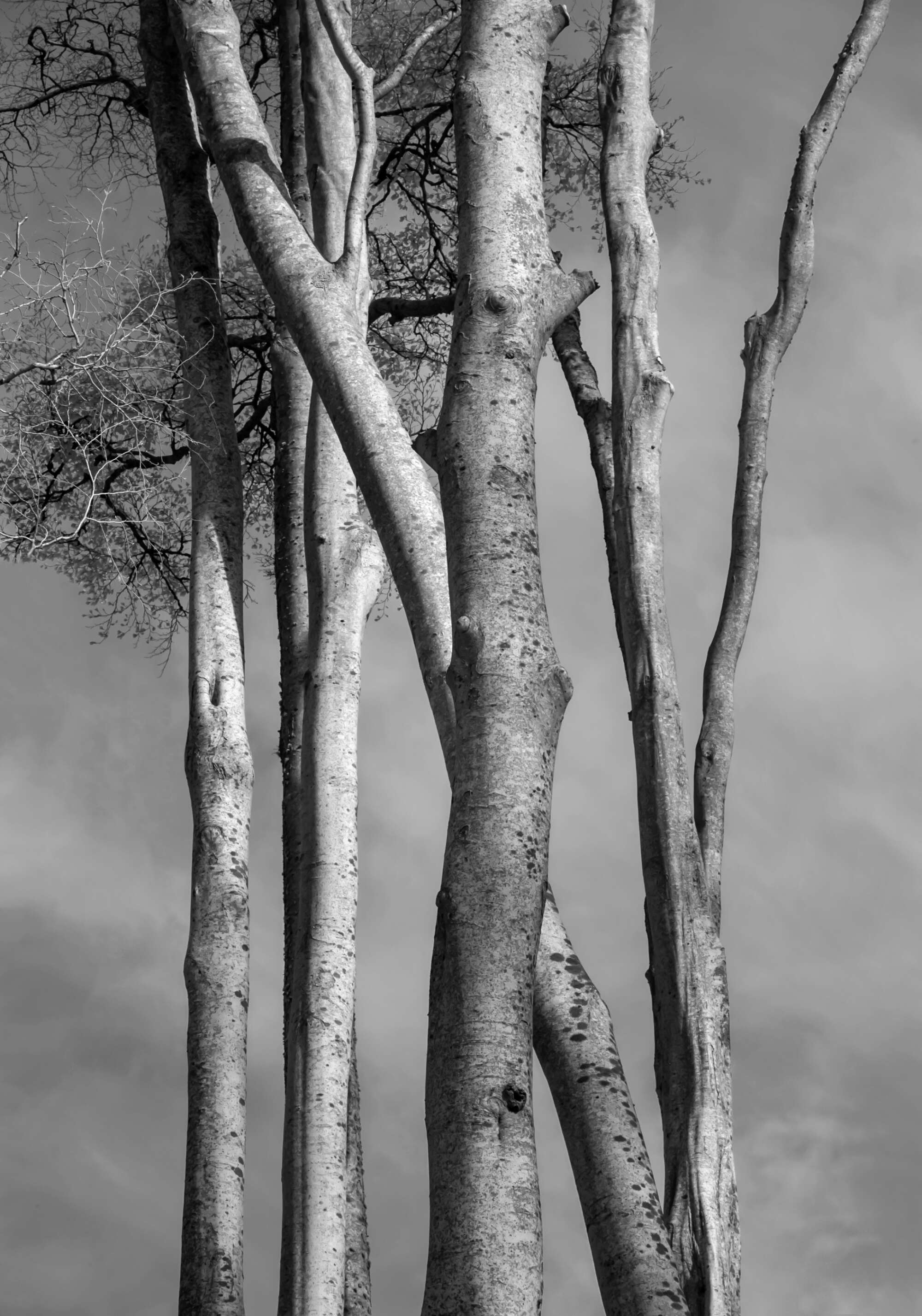
It is this discipline of distilled vision and freedom to explore shapes that will be the making of your woodland images. As the light changes and moves throughout the day, you will see the relationship of light and shadow change constantly and the limbs will appear very differently even by moving just a metre or so. Lastly, take your time. This is a process of slow contemplation and, if you have not approached woodland photography in this way, it will feel rather odd that you are setting out to ignore the entire tree structure, but trust me it will serve you dividends. Slowly, after you are feeling comfortable with the relationship you have forged, then allow yourself to widen your field of view, and only allow enough into your frame so it that contributes to your composition. Landscape photographers are known for working with wide angle lenses and near/far compositions, but this approach throws away that thought process and challenges the mind.
